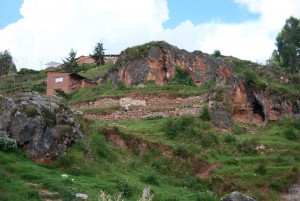Huacas in Cuzco

On waking, I jumped from my bed, put on my running shoes and left. I wanted to run up the side of the highway that climbs out of the city of Cuzco to the archeological complex of Sacsayhuaman. But halfway there, my legs churning, I decided instead to race up what’s called the “Capac Ñan,” The old Inca highway. With every step I was struck by the beautiful green covering filled with ancient stones called “huacas”. They filled me with strong natural energy and gave me peace.
The word huaca comes from the Quechua “wak’a”. They were sacred places, especially sacred boulders or masses of rock, where the ancestors paid homage and venerated their deities. They were also places where the ancient mummies could be placed and also honored. According to the ancient traditions of Cuzco, from long before Columbus, the huacas had their own personhood and personality. They were part of complexes of sacred places, temples, for the Incas and Pre-Incas.
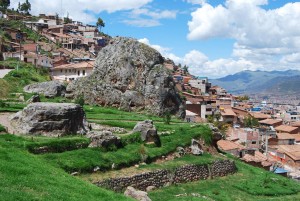
Surrounding some of the places of meditation one can also see different spaces or rooms which in the times of Tawantinsuyo (the Inca Empire) were very important. In these places families or ayllus (lineages or communities) could fashion their own huaca and meditate while their leaders prepared offerings on the altars to give thanks to the holy figures of the Andean world.
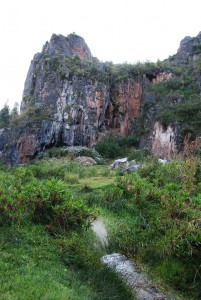
Huacas are also famous for being the place in which offerings and sacrifices were made. As a result, they were plundered during the first years of the Spanish invasion. Afterwards the Spaniards destroyed many of them since they considered them heresies against the Christianity they wished to implant.
In fact trees and bushes were often planted in front of them to try to impede people from visiting these holy shrines. Today eucalyptus trees surround many of them even though they did not come to Peru from Australia until more recent times.

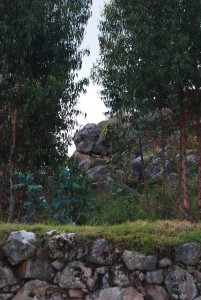
Nevertheless, not even force nor indoctrination in the faith of the Spaniards made people forget the huacas. Even today they are objects of veneration. A small part of the population continues their devotion to their ancestors. In general, people from nearby communities, despite forced syncretism, come to pay homage.
This is consistent with their true inheritance from their ancestors. People have not lost either the love or respect for the Pachamama, the Lady Earth. Even though another part of Peruvian culture does not keep this knowledge, it still lives.
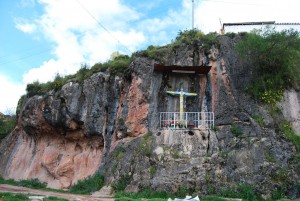
Along the Capac Ñan I found the combination of Huacas that are today called the Cusilluchayoc or “heart of the Pacha”, as well as what is called the Temple of the Moon, among others. These sacred places are little known by people, especially outsiders, and are maintained by the Peruvian National Institute of Culture (INC). Nevertheless, many of the holy places seem to have been forgotten by this institution that recognize some more than others. In their quest to promote tourism sometimes they forget about repairing and sustaining Andean culture.
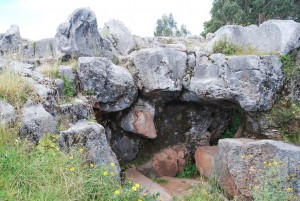
Close to these huacas one can often find houses with figures the sacred animals of the Andean view of the cosmos such as the condor, the puma, and the serpent, even though the INC does not allow houses to be built close to the huacas. An INC worker told me that me that foreigners don’t just stay on the Main Square nowadays; they come to build house close to the temples and nature. By the Temple of the Moon there is a little river that divides the human domain from nature.
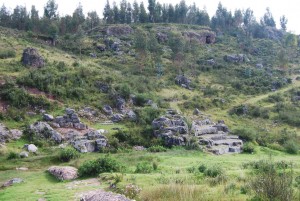
One can see with joy that in these times of alienation, people continue connected with out huacas. The evidence of that are the ashes from offerings and payments to the Pachamama. Recently, the stone Sayhuite even appeared on one of our Peruvian one-sol coins.
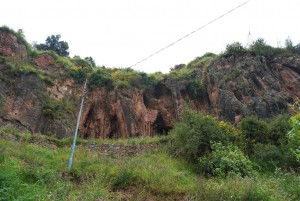
As I left to take another path that dropped to my parents’ house I saw the huacas located in the neighborhoods of Huayracpunco, José Escobedo, and Ayuda Mutua. The flowing, clean air of the places and the energy that these different huacas transmit impressed me. The huacas go from top to bottom like long chains all over the Valley of Cuzco. Our huacas still survive.
